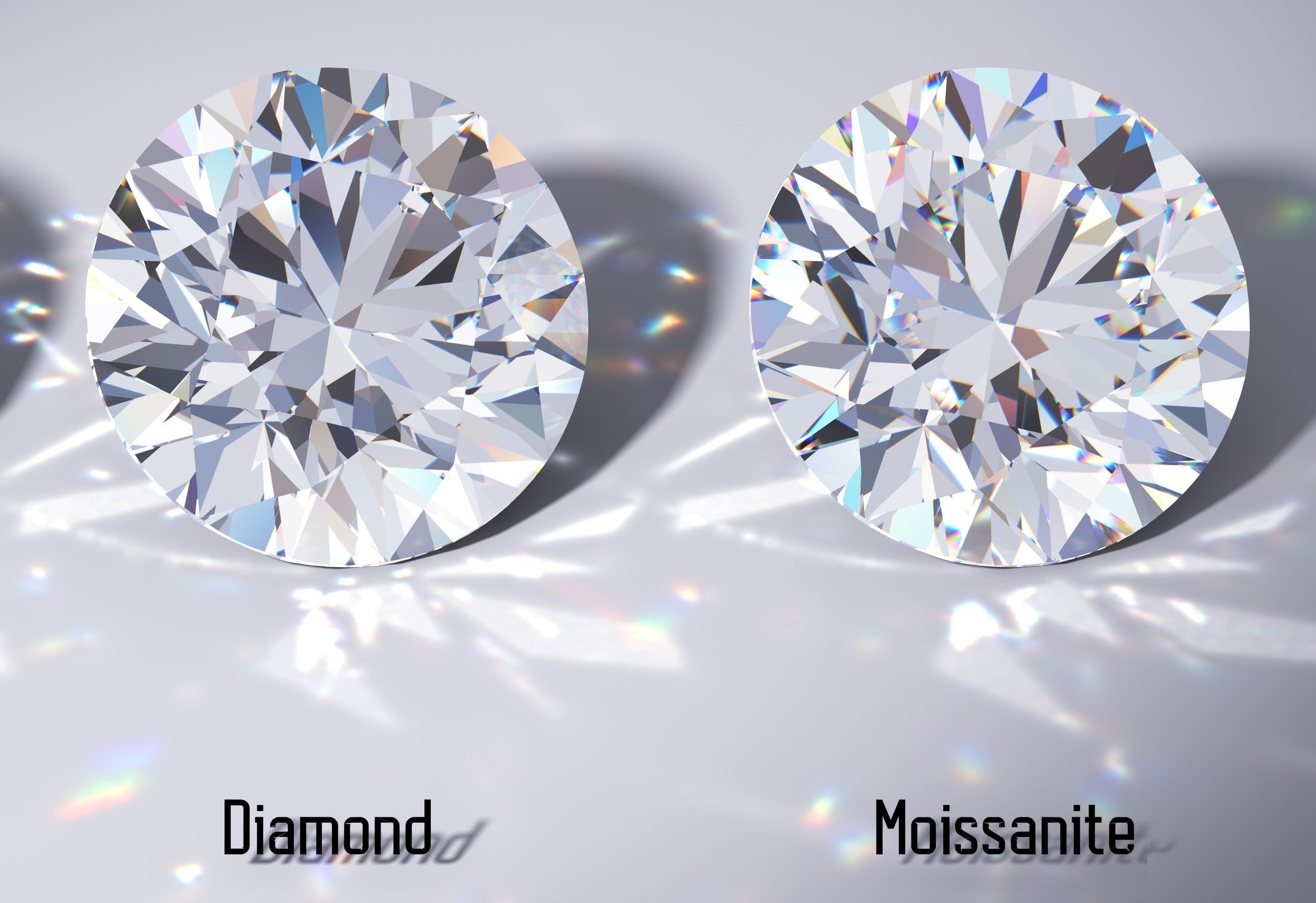Article: Lab Diamond vs. Moissanite

Lab Diamond vs. Moissanite
Lab Diamonds vs. Moissanite: Understanding the Differences
When it comes to choosing the perfect gemstone for an engagement ring or other fine jewelry, two popular options have gained significant attention: lab diamonds and moissanite. Both offer stunning beauty and durability, but they differ in various aspects. In this post, we’ll explore the key differences between lab diamonds and moissanite to help you make an informed decision.
What Are Lab Diamonds?
Lab diamonds, also known as synthetic or cultured diamonds, are created in a controlled environment using advanced technology that replicates the natural diamond formation process. These diamonds have the same physical, chemical, and optical properties as natural diamonds, meaning they are essentially identical in every way. Lab diamonds are graded using the same criteria as mined diamonds, known as the Four Cs: Carat, Cut, Color, and Clarity.
Pros of Lab Diamonds:
- Ethical Sourcing: Lab diamonds are conflict-free, providing peace of mind about their origin.
- Affordability: Generally, lab diamonds are more affordable than natural diamonds, often costing 20-40% less.
- Quality: Many lab diamonds offer higher quality options, as they can be created to eliminate inclusions.
What Is Moissanite?
Moissanite is a naturally occurring mineral composed of silicon carbide, but the majority of moissanite on the market today is lab-created. It was first discovered in a meteorite, which is why it has a unique origin story. Moissanite is known for its incredible brilliance and fire, often exceeding that of diamonds.
Pros of Moissanite:
- Brilliance: Moissanite exhibits more sparkle and fire than diamonds due to its higher refractive index.
- Affordability: Moissanite is generally less expensive than both lab diamonds and natural diamonds, making it an attractive option for budget-conscious buyers.
- Durability: Moissanite ranks 9.25 on the Mohs scale of hardness, making it one of the hardest gemstones available.
Key Differences
-
Appearance:
- Lab Diamonds: Visually indistinguishable from natural diamonds and have the same sparkle.
- Moissanite: While it sparkles more intensely than diamonds, some people may notice a different “fire” (the colorful flashes of light).
-
Price:
- Lab diamonds tend to be more expensive than moissanite, but both are generally more affordable than natural diamonds.
-
Origin:
- Lab diamonds are created to replicate natural diamonds, while moissanite is a distinct gemstone that is primarily lab-created today.
-
Resale Value:
- Lab diamonds hold a better resale value compared to moissanite, which typically has a lower market demand.
-
Environmental Impact:
- Both lab diamonds and moissanite are considered more environmentally friendly than mined diamonds, but lab diamonds are often touted for their sustainability since they don’t involve mining.
Which One Should You Choose?
Ultimately, the choice between lab diamonds and moissanite comes down to personal preference and values. If you’re looking for a gemstone that is virtually identical to a natural diamond in terms of appearance and value, a lab diamond may be the right choice for you. On the other hand, if you’re drawn to unique brilliance and affordability, moissanite could be the perfect fit.
Conclusion
Both lab diamonds and moissanite offer stunning alternatives to traditional diamonds. By understanding their differences, you can choose the gemstone that best suits your style, budget, and ethical considerations. Whether you opt for a lab diamond or moissanite, rest assured that you’ll be wearing a beautiful and durable piece of jewelry for years to come.




